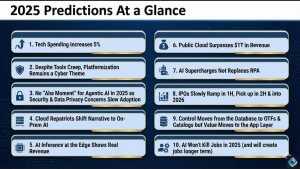In an announcement that reflects the evolving needs of IT and security operations teams, Cribl has introduced Copilot Editor, a new capability within its AI-powered telemetry management portfolio. Available now, Copilot Editor is designed to streamline the often-complex task of schema mapping and pipeline creation, empowering teams to translate disparate telemetry data into structured, analytics-ready formats while preserving human oversight.
This release extends Cribl’s broader vision of simplifying data pipeline operations in distributed (hybrid and multi-cloud) environments. As organizations continue to modernize their IT and security architectures, Copilot Editor aims to bridge the gap between increasingly complex telemetry data sources and the analytical platforms that drive operational insight and security response.
Why This Matters
Enterprise IT and security teams are inundated with telemetry data from countless endpoints, applications, and infrastructure components. This data is essential for performance monitoring, threat detection, and business intelligence; however, extracting value from it remains challenging due to inconsistent data formats, proprietary schema dependencies, and an overreliance on manual processes.
Cribl’s Copilot Editor directly addresses these challenges by leveraging intent-aware AI to guide users through schema mapping and pipeline creation. Unlike closed automation tools, Copilot Editor employs a human-in-the-loop (HITL) approach, maintaining operator control while reducing repetitive work and eliminating error-prone manual steps. This approach aligns with broader trends in AI adoption across enterprise IT: solutions that accelerate outcomes without compromising governance, security, or accountability.
Key Capabilities
Cribl is quick to point out that Copilot Editor is an augmentation tool. It doesn’t replace humans; it empowers them. By understanding the structure and semantics of logs across various systems, the tool can auto-generate pipelines that clean, filter, and route telemetry data to the appropriate destinations. These pipelines are not rigid or static; they can be reviewed, edited, and adapted by users as standards evolve or operational priorities shift.
Cribl highlights five primary benefits of Copilot Editor:
- Human-in-the-Loop Automation
AI recommendations are delivered with full transparency, allowing users to validate, adjust, and approve each step of the pipeline process. This ensures operational integrity while reducing fatigue associated with repetitive tasks. - Rapid Time-to-Value
By reducing onboarding time for new data sources from hours or even days to minutes, teams can eliminate data integration bottlenecks and focus on more strategic initiatives. - Vendor Flexibility and Schema Agnosticism
The tool enables teams to build pipelines that are not locked to any single SIEM, data lake, or analytics platform. This flexibility enables easier changes to architecture over time without requiring re-architecting of data transformations. - Improved Security Posture
Copilot Editor automatically populates key metadata fields that are critical for threat detection. This supports faster investigation workflows and can help reduce false positives, which often overwhelm security teams. - Elastic, Scalable Control
As telemetry volumes grow, Copilot Editor scales to match throughput demands without compromising performance.
Practical Applications Across IT and Security
Copilot Editor was designed with a broad user base in mind, ranging from SIEM engineers in large enterprises to managed security service providers (MSSPs) supporting multiple clients. Its schema-aware flexibility makes it well-suited for organizations that rely on multiple telemetry sources and need to maintain agility as their observability or security stacks evolve.
For example, Cribl claims a DevOps team can use Copilot Editor to normalize data across multiple cloud providers, ensuring consistent visibility while optimizing data ingestion costs. Simultaneously, a security operations center (SOC) can utilize the tool to streamline threat detection workflows by feeding enriched, structured data into its Security Information and Event Management (SIEM) or Extended Detection and Response (XDR) platform.
For Cribl, it’s not just about routing logs, it’s about turning raw telemetry into actionable intelligence without being bound by proprietary schemas or siloed tooling.
Why this matters
The launch of Copilot Editor reflects several key trends we’re observing across enterprise IT:
- AI-Augmented Operations: Organizations are increasingly adopting AI not as a replacement for skilled professionals but as a force multiplier. Tools that provide AI-generated suggestions with human oversight and closed-loop systems are proving most effective in critical domains, such as cybersecurity and observability.
- Composable Architectures: Cribl’s schema-agnostic and vendor-neutral design aligns with the movement toward composable, flexible architectures that support rapid change, whether that involves migrating to new platforms or responding to emerging threats.
- Cloud-Native Scale: With the exponential growth of telemetry data, platforms must be able to scale horizontally and dynamically. Copilot Editor’s integration with Cribl Stream supports this elasticity without adding operational overhead.
- Security as a Data Problem: Increasingly, effective security outcomes depend on having the right data, in the right format, at the right time. Cribl’s focus on enriching and transforming telemetry data upstream enables downstream tools to operate more efficiently and accurately.
OurANGLE
Cribl’s Copilot Editor is a response to the real-world challenges faced by IT and security operations teams. Rather than chase fully autonomous data transformation, the company has opted for a more pragmatic approach—one that acknowledges the value of human expertise while addressing the pressing need for automation, flexibility, and speed.
As organizations continue to modernize their data pipelines in support of AI initiatives, platform migrations, and security transformation, tools like Copilot Editor will be increasingly essential to translating raw telemetry into trusted insights and accelerating the time to comfort with AI technologies.



